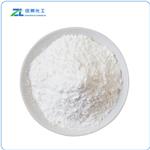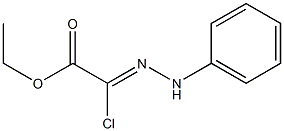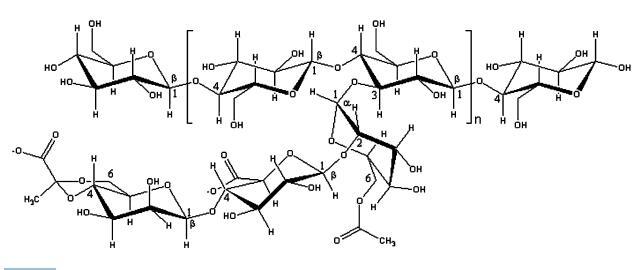Locust Bean Gum - Application in Food Industry
LBG is a galactomannan vegetable gum extracted from the seeds of the carob tree. Also called carob gum or carubin, it is commonly used as a thickener and gelling agent in food products. LBG is less soluble and has lower viscosity than guar gum, as it has fewer galactose branch points. It needs heating to dissolve, but is soluble in hot water. LBG differs from guar gum in that it does form weak thermo-irreversible gels by association of the galactose-deficient regions and, therefore, has poorer freeze–thaw behavior. Being nonionic, LBG is not affected by ionic strength or pH, but will degrade at pH extremes at high temperatures.
LBG is often used in canned meat formulations because of its heat stability. The temperature at which it goes into solution is about 80°C, with maximum viscosity reached at 95°C. Because it does swell in cold water, it has been found to increase brine retention in injected products prior to cooking. In most meat applications, LBG is often used in conjunction with carrageenan, as it can improve brine retention while carrageenan improves cook yield. It is true that many carrageenan blends do contain different levels of LBG, usually up to 10%. Reportedly, the advantage of having both hydrocolloids in the blend is to take advantage of this known synergy. However, as indicated earlier, synergies between hydrocolloids do not manifest themselves to their full potential due to the isolation effect of the meat proteins. The hydrocolloids are carried by the water and the water is entrapped in the protein matrix during processing and heating. This entrapment, along with higher solubility temperatures, decreases the interactions that would otherwise take place.

Fig. 3.8 Basic structure of gellan (from Chaplin, 2007b . Reprinted with permission).
The largest applications of Locust Bean Gum are in thermally processed foods whether stored frozen, refrigerated or at room temperature. These fall into two major groups: thickeners and gelling systems both which also include moisture management. Heated sauces, fillings, pasteurized dairy products and alternatives all leverage the thickening and moisture management functionality of Locust Bean Gum. These systems may also involve the gelling synergies with proteins, starch and other hydrocolloids (Xanthan, Carrageenan, Agar). Locust Bean Gum is also tolerant of high solids and thus is used in high sugar products such as gummy-type confections, gelled confectionary centers, icings, and glazes. The moisture management functionalty also contributes to increased freeze thaw stability and extended shelf life in frozen desserts and entres. Locust Bean Gum has also be used as a clean label and 100% organic alternative for suspension in shelf stable beverages.
Regulatory Status
In the United States, LBG has GRAS status and its use is not limited when following GMP. The USDA permits its use in cured pork products in combination with carrageenan and xanthan gum, not to exceed 0.5% of product formulation (CFR, 2007b) . In the European Union it has been assigned reference number E 410 under the approved additives list (European Parliament and Council, 2006).
You may like
See also
Lastest Price from LOCUST BEAN GUM manufacturers

US $0.00-0.00/KG2025-04-15
- CAS:
- 9000-40-2
- Min. Order:
- 1KG
- Purity:
- 99%
- Supply Ability:
- 500000kg

US $30.00/kg2025-04-15
- CAS:
- 9000-40-2
- Min. Order:
- 1kg
- Purity:
- 99%
- Supply Ability:
- 5000kg/Month


